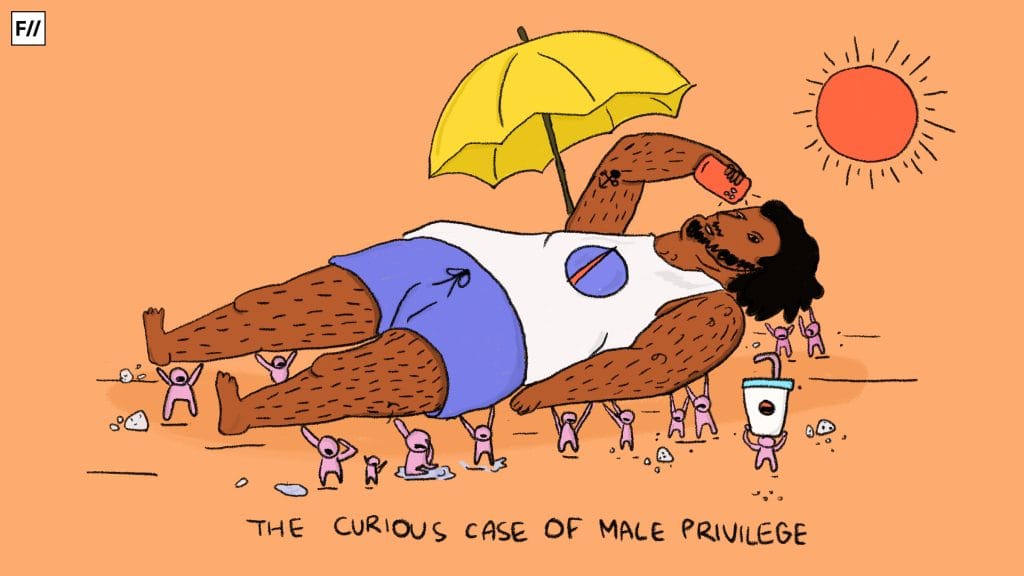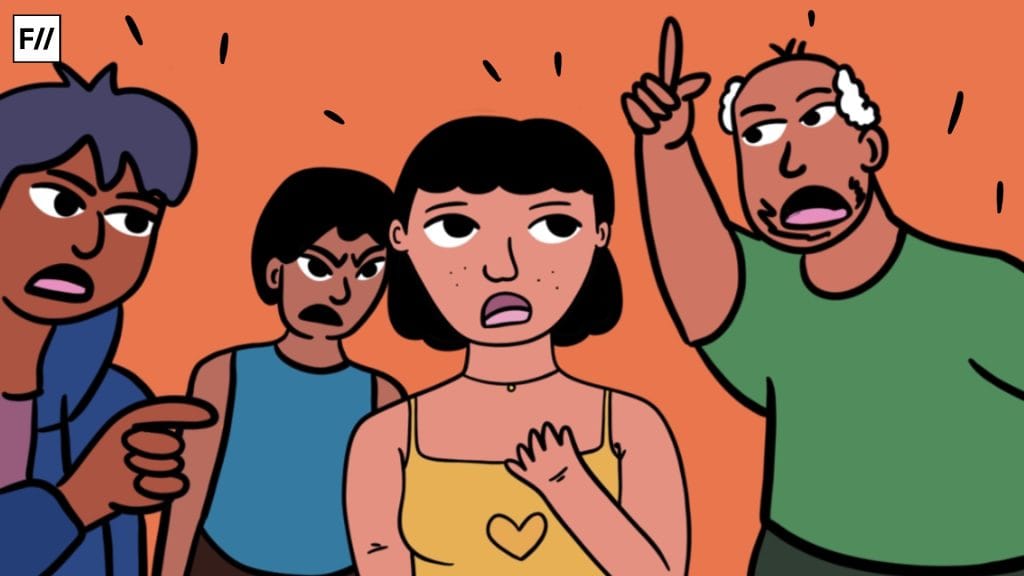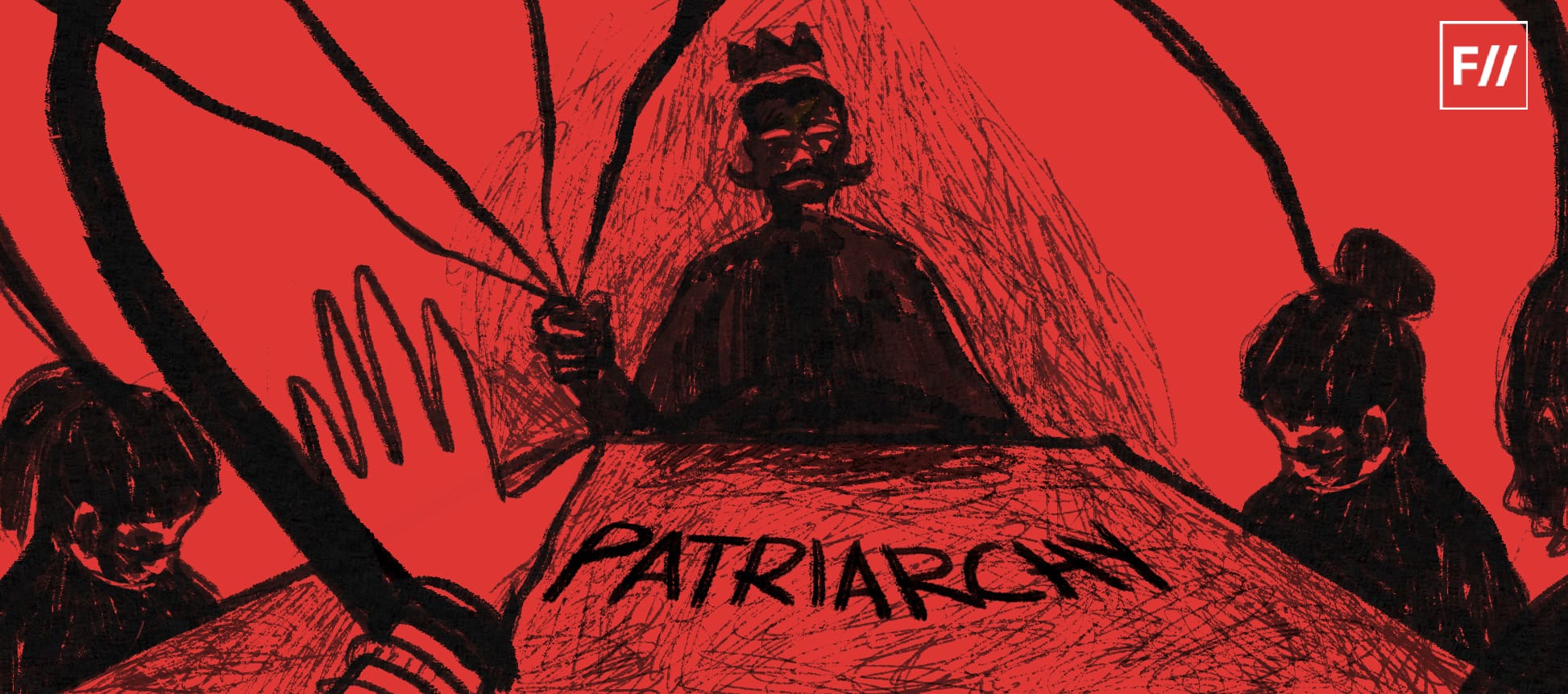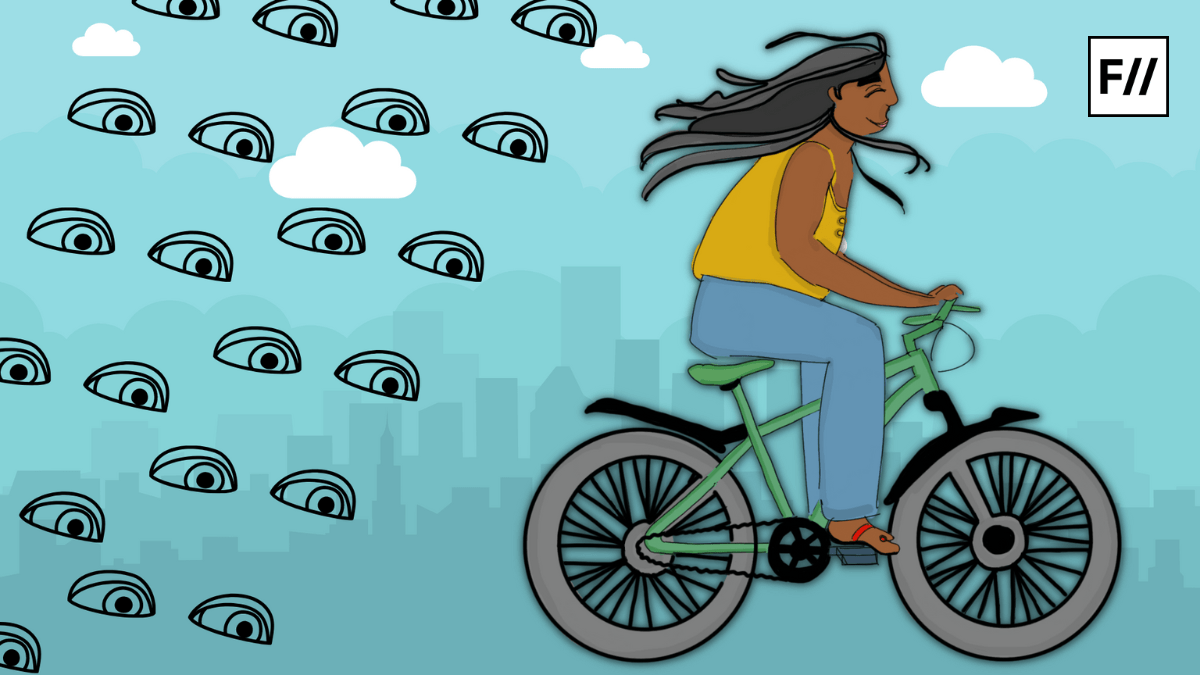The term ‘misandry‘ has been increasingly mentioned in recent weeks. While the term has been deeply embedded in the manosphere’s vocabulary for long, following the Atul Subhash suicide, it has gained renewed traction. It has since spilt outside of MRA/manosphere circles, with many claiming that women, society, and institutions exhibit misandrist tendencies and systematically favour women and disfavour men.
The manosphere’s use of the term, or its insistence that it’s the inverse of misogyny and is just as, if not more, prevalent, isn’t new. The dominant narrative within the Indian manosphere seems to be that men face systemic persecution at the hands of women and in a system that is created for their sole benefit. What’s troubling, however, is the use and acceptance of the term outside of the manosphere and how it has penetrated common parlance as the opposite of misogyny.
However, uncritically viewing ‘misandry‘ as the inverse of misogyny brings with it a plethora of problems that go beyond mere inaccuracy or lending legitimacy to the myth of male persecution. By essentially devising an inverse form of oppression, we not only risk socially and institutionally neglecting the very real oppression of women by diverting focus to unfounded claims of men’s oppression, but we also create a dangerous narrative where men are just as disadvantaged as women and therefore don’t hold any power over them.
Without understanding power and how power imbalances fuel oppression, any exploration of oppression will be incomplete and distorted. Misandry, particularly when considered as an inverse of misogyny and framed as a systemic, institutional form of discrimination, is not a real phenomenon. The very claim of institutional misandry is irreconcilable with the realities of the patriarchal world in which we live.
Misandry is an oppositional myth
The contention that misandry isn’t real because it doesn’t take on a systemic form can seem like a pedantic exercise in rationalising a ‘bias’—a term the manosphere would likely approve of, given its excessive use by them—against men. Viewed out of context and uncritically, it might make at least semantic sense that misogyny would have an antonym, misandry, as the opposite of misogyny, which doesn’t seem in the least controversial or problematic. However, this is an oversimplification and a purely semantic argument divorced from social realities.

Misandry is defined as a ‘dislike of, contempt for, or ingrained prejudice against men.’ Misogyny’s definition is merely the inverse, only replacing ‘men‘ with ‘women.’ But the harms of misogyny and its effects on the lives of women don’t stem from mere prejudice but from the fact that such prejudice has been elevated to discrimination that is systemically and structurally embedded, influencing socio-economic, cultural, politico-legal, and institutional perception and treatment of women. Whether in families, communities, workplaces, interpersonal relationships, courts, policing, law and policy, media representation, or public spaces, misogyny is pervasive, prominent, and, most importantly, utterly inescapable.
In contrast, what is often referred to as misandry is women expressing wariness or justifiable anger towards men or standing up to misogyny. Even in the Atul Subhash case, women who refused to empathise with him because of the violent misogyny of his suicide note and the dehumanising attitude towards women that was apparent in it were called misandrists.
This raises the question: does the wariness an oppressed social group exhibit towards the oppressor class be called ‘prejudice?’ And while women’s own experiences assuredly inform how they view men, so far as prejudice goes, women are taught from a young age to be wary of men and view them as potential threats. A majority of the control that families exert on women is premised on women being vulnerable to harassment and violence in shared spaces with men. Further, victim-blaming often is centred around shaming women for lacking such wariness and inherent distrust of men and giving them the benefit of the doubt.
Even if this wariness or anger, however justifiable, can be called misandry, it still isn’t comparable to misogyny. Misogyny is structural and systemic and inflicts great violence on women. Not only is ‘misandry‘ not structural or systemic in nature, it doesn’t pose a threat to men or encroach upon their autonomy or agency. Women expressing anger at men or refusing to empathise with a misogynist doesn’t translate into structural and violent forms of discrimination. While misogyny disempowers women at best and costs them their lives at worst, what the manosphere deems as misandry does nothing of consequence and only hurts men’s feelings at worst. Institutions, society, and culture are still skewed in favour of men and continue to be thoroughly patriarchal. Yet the manosphere insists misandry is institutional.
Unlike misandry, patriarchy is indeed institutionalised. And while it is set up to benefit men, the patronising and infantilising lens through which it views women can sometimes mean these systems, which assuredly are by and for men, can sometimes backfire against them. What is then claimed to be ‘misandry‘ in an institutional sense is just institutionalised patriarchy having unintended consequences.
Women being awarded child custody in a majority of cases is most often cited as evidence of institutional misandry. In the patriarchal imagination, women firmly belong in the domestic sphere. Household responsibilities and raising children are exclusively within a woman’s domain. Many women are barred from working outside of the home by families and are actively discouraged from doing so by society; instead, they are asked to focus exclusively on childrearing. Further, patriarchal gendered expectations view women as being naturally better suited to raising children; therefore, women are conditioned from a young age to give primacy to their caregiving responsibilities.
It is no surprise then that in cases where the parents of a child split up, society and institutions believe the best interest of the child is in staying with the mother. Rather than being an outcome of institutions wanting to favour women, it is institutions viewing women through a patriarchal lens that leads to mothers gaining child custody with ease. And while this patriarchal and gendered outlook, which views women as the primary parent, might fortuitously benefit them in child custody cases, in every other setting, it is a routinely wielded tool to keep women out of the workforce, deny them the prospect of financial independence, and exert control over them.
Another manosphere claim is that feminism has given rise to misandry and ruined the socio-cultural (read: patriarchal) fabric of the country. The rhetoric goes that, under the guise of feminism and empowering women, both women and institutions are disempowering men. Essentially, more gender parity is said to have a positive correlation with misandry. Not only is this not rooted in any fact, there are studies that disapprove of this myth.
A 2004 study measuring hostile and benevolent attitudes of men and women towards each other in sixteen nations found that higher endorsement of hostile (and benevolently sexist) attitudes towards the other sex existed in populations that had high rates of gender inequality and strict adherence to traditionalism. In relatively egalitarian countries, men and women expressed less hostility towards each other and held fewer benevolently sexist views of the other gender. In a meta-analysis of six studies, it was found that attitudes towards men didn’t significantly differ between feminists and non-feminists, and both groups held largely positive attitudes. Further, feminists displayed no more negative attitudes towards men than men displayed towards fellow men.
Any rare disadvantage men face socially and institutionally is due to the patriarchy and not misandry. But the manosphere identifies feminism and strides made towards gender equality as the primary contributing cause. But this isn’t a mere misidentification; it is by design. Misandry, like all ludicrous claims of reverse forms of oppression, is mere eyewash to maintain the status quo that allows those with power to retain power while keeping the marginalised and oppressed powerless.
Upholding oppressive power structures
White people often claim that ‘reverse racism‘ exists. In the United States, despite racial disparities being significantly high and Black Americans facing all forms of systemic and structural discrimination, claims that Black people can and do discriminate against white people have been gaining traction. Similarly, claims of heterophobia exist, with straight people claiming institutions and queer people discriminate against them or hold prejudicial views. In the Indian context, claims of social and institutional Hinduphobia have become ubiquitous, as have claims that discrimination against upper-caste Hindus, especially Brahmins, exists. Misandry is no different from such claims and is just as ill-intentioned.

A key element of systemic oppression is power. An oppressor group always has significant socio-cultural, economic, and political power over the people they oppress. For this reason, oppression cannot go both ways because only one of these groups holds power over the other.
Any claim that a historically marginalised and disadvantaged group has begun to oppress their oppressor is a myth and is employed by chauvinists to peddle narratives of non-existent persecution with the motive of justifying the upholding of systems of oppression that benefit them by claiming these systems are required to ensure their ‘protection.’
An example of this is the commonly held anti-reservation sentiment expressed by upper castes in India for being discriminatory against them. In demanding an end to reservation, they aren’t only demanding an end to affirmative action that benefits historically oppressed and marginalised caste groups. But are also consequently demanding that the status quo, wherein Savarnas hold all the socio-economic power and have cultural dominance, be retained through the maintenance of casteist barriers in accessing education and jobs for the Scheduled Castes and Scheduled Tribes.
Similarly, the manosphere’s ‘solution‘ to misandry has been to advocate the upholding of the patriarchy; misandry is ultimately an excuse to advocate for the continued subjugation of women. Seen within this context, the manosphere positioning feminism and women’s equality as a threat to men is hardly surprising. Gender equality entails the dismantling of patriarchal power structures that are skewed in favour of men. And in a country so deeply steeped in patriarchy and misogyny, this reads as a threat.
About the author(s)




